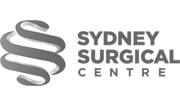Glaucoma
Glaucoma is an eye disease that results in progressive vision loss due to the increased intraocular pressure and subsequent optic nerve damage. Optic nerve is a bundle of nerve fibres that carries visual images or signals from the eyes to the brain. In general, a clear fluid called aqueous humor circulates through the eye and then drains out through a mesh-like channel (trabecular meshwork). Whereas, in glaucoma this channel becomes blocked and fluid does not drain properly thus increasing pressure inside the eye (intraocular pressure). This increased intraocular pressure causes damage to the ocular nerves and blood vessels resulting in loss of vision.
Types of glaucoma
The different types of glaucoma include:
- Open Angle Glaucoma: This is the most common form of glaucoma, also called primary or chronic glaucoma. This type of glaucoma occurs when the eye's drainage system becomes clogged and gradually increases the pressure inside the eye. The angle between the iris and cornea is wide and open.
- Closed Angle Glaucoma: This type of glaucoma is less common and can cause a sudden build-up of pressure in the eye. The angle between the iris and the cornea is narrow or closed.
- Normal tension (pressure) glaucoma or low-tension glaucoma: In this type of glaucoma the optic nerve is damaged despite normal intraocular pressure.
- Congenital Glaucoma: This type of glaucoma is seen in babies and often runs in families. It is caused by improper development of eye's drainage canals before birth.
- Other types of Glaucoma are pigmentary, secondary glaucoma, pseudoexfoliative glaucoma, traumatic glaucoma, neovascular glaucoma and irido corneal endothelial syndrome (ICE).
Treatment
The aim of the treatment is to reduce the pressure in your eyes, which involves using special eye drops or medications. In certain cases, laser treatment or surgery is performed to prevent further damage.
Laser treatment
Laser treatment is usually recommended if the use of eye drops does not improve your symptoms. Laser treatment involves using powerful beams of light to improve the flow of fluid out of your eye and reduce the pressure inside the eye.
During the laser surgery, your eye is numbed with anaesthetic eye drops. Then, your doctor will place a special lens in front of your eye. Afterwards, a laser beam is aimed into your eye and you can see flashes of coloured light.
Types of laser surgery for glaucoma include:
Laser trabeculoplasty: Laser trabeculoplasty is often used to treat open-angle glaucoma. The laser is aimed at trabecular meshwork, where fluid drains from the eye. This surgery opens the clogged areas and makes it easier for fluid to flow out of the eye.
There are two types of laser trabeculoplasty surgery:
- Argon laser trabeculoplasty (ALT): During ALT surgery, a laser creates burns in the trabecular meshwork.
- Selective laser trabeculoplasty (SLT): During SLT, a laser is used at different frequencies to treat specific cells in the meshwork.
Laser Iridotomy: Laser iridotomy is normally performed to treat people with closed angle glaucoma. During iridiotomy, the laser creates a small hole through the iris to improve the flow of fluid from the back of the eye to the trabecular meshwork. This opening drains out the fluid and helps lower eye pressure.
Cyclophotocoagulation or laser cyclo-ablation: Laser cyclo-ablationmay be helpful in treating people with severe glaucoma, which has not been manageable with medications or surgeries. In cyclophotocoagulation a laser is used to destroy the parts of the ciliary body, a part of the eye that produces eye fluid. This therapy decreases the production of fluid thus reducing the eye pressure.
Risks and complications
You may have a slight burning sensation in the eye during laser surgery. Your eyes may feel irritated and have slightly blurred vision. Rarely a short-term increase or an excessive drop of intraocular pressure can also occur after laser surgery. Both of these complications can be manageable with medications. You may also have a slight risk of cataract formation after some type of laser surgeries for glaucoma.

















